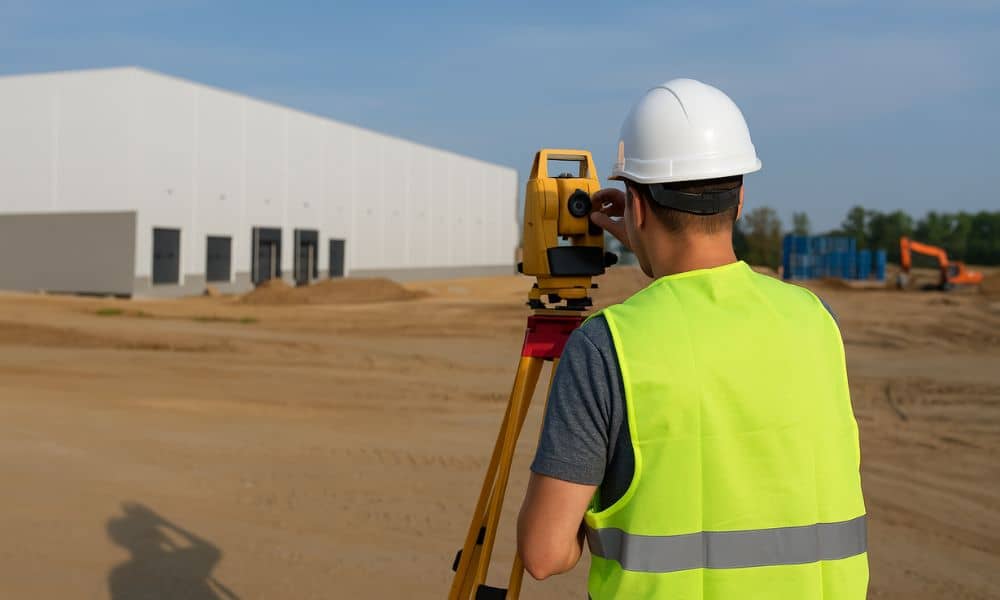
Toledo is quickly becoming a hub for shipping, logistics, and warehousing thanks to its strong access to highways, rail lines, and the Great Lakes. But building successful distribution hubs takes more than just land—it requires strategic planning from the ground up. A land surveyor plays a key role by providing data that supports site selection, layout planning, and infrastructure coordination. This article outlines the practical ways land surveyors contribute to smarter, more efficient logistics park development.
Planning the Site for Big Buildings and Busy Truck Traffic
A logistics site needs more than space, it needs the right space. Surveyors help by checking property lines, finding any restrictions, and making sure the land is approved for industrial use.
This step helps you design a site that fits the rules and works for future growth. You’ll be better prepared to build warehouses, shipping docks, or freight yards without delays.
📊 Stat: The U.S. Department of Transportation says freight traffic will grow by 50% by 2050 (USDOT Freight Analysis Framework, 2023). That means more demand for smart, well-planned logistics hubs.
Planning Access for Trucks and Deliveries
Trucks need wide roads, smooth entry, and plenty of space to turn and load. Surveyors help:
- Map safe entry and exit routes for trucks
- Make sure driveways line up with public roads
- Plan where trucks can wait, turn, and unload safely
This helps meet city rules and avoids traffic problems during busy hours.
Working with Railroads, Utilities, and Nearby Roads
If your site uses trains or is located near key infrastructure, surveyors provide utility and easement mapping to identify rail spurs, power lines, sewers, and storm drains. They also check for public land or access easements that could impact development.
With this information, project teams can design logistics hubs that connect smoothly to utility networks and transportation corridors—without interfering with existing infrastructure or property lines.
Getting the Ground Ready for Heavy Use and Drainage
Logistics parks use a lot of pavement and carry heavy loads. Drainage must be planned carefully so water doesn’t pool near buildings or loading docks. An accurate drainage and grading survey provides elevation and slope data engineers use to shape the site effectively and manage runoff.
Surveyors help engineers:
- Level the site properly
- Design systems that drain stormwater fast and safely
- Avoid future damage from standing water
Helping with Permits and Local Rules
To build legally, you need permits. Surveyors provide the maps and documents cities require. These include:
- Legal site boundaries
- Easements and access points
- Info for driveway, drainage, and utility permits
- Support for EPA and city zoning rules
This helps you stay on schedule and avoid permit delays.
Planning for Growth and New Tenants
Most logistics sites grow over time. Surveyors help by:
- Dividing land into sections for future buildings or renters
- Creating long-term records for use, resale, or leases
- Providing digital survey files for tracking and planning
This makes it easier to manage the site over time and plan changes.
❓FAQs
1. Can surveyors help with truck traffic planning?
Yes. Survey data is used to design road layouts, turning zones, and entry points that accommodate heavy vehicles safely and efficiently.
2. Do I need a new survey if the land was developed before?
Often yes. Site features, infrastructure, and zoning requirements may have changed, so updated data ensures current compliance.
3. What can a surveyor do about drainage?
Surveyors provide elevation and slope data engineers use to design effective stormwater systems for large paved areas.
4. Can a surveyor help with permits?
Survey maps and plats are required for many types of permits, including zoning, stormwater, driveway, and utility access.
5. How do surveys support future expansion?
Survey records document site use, support parcel splits, and provide digital files that help with tenant planning or resale.
